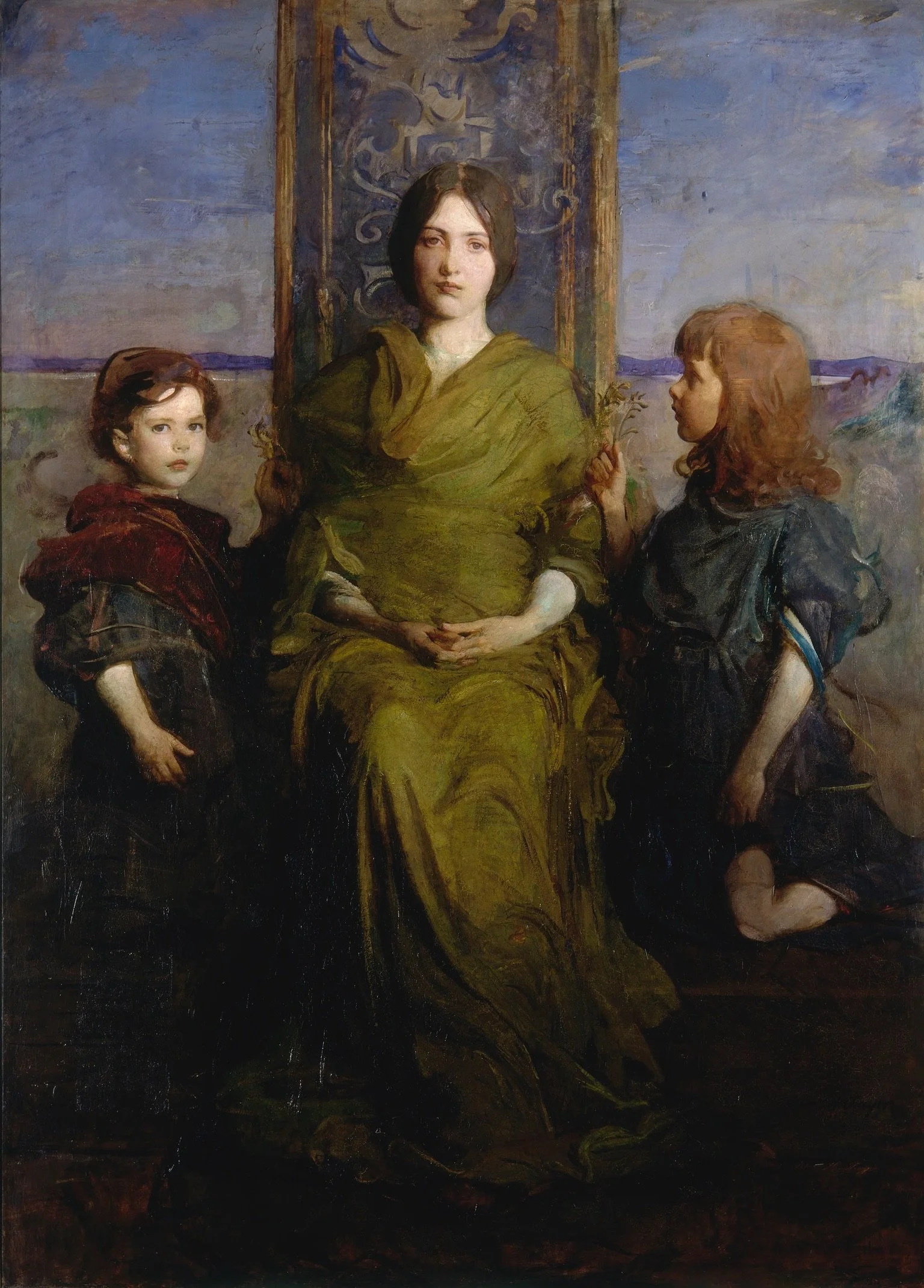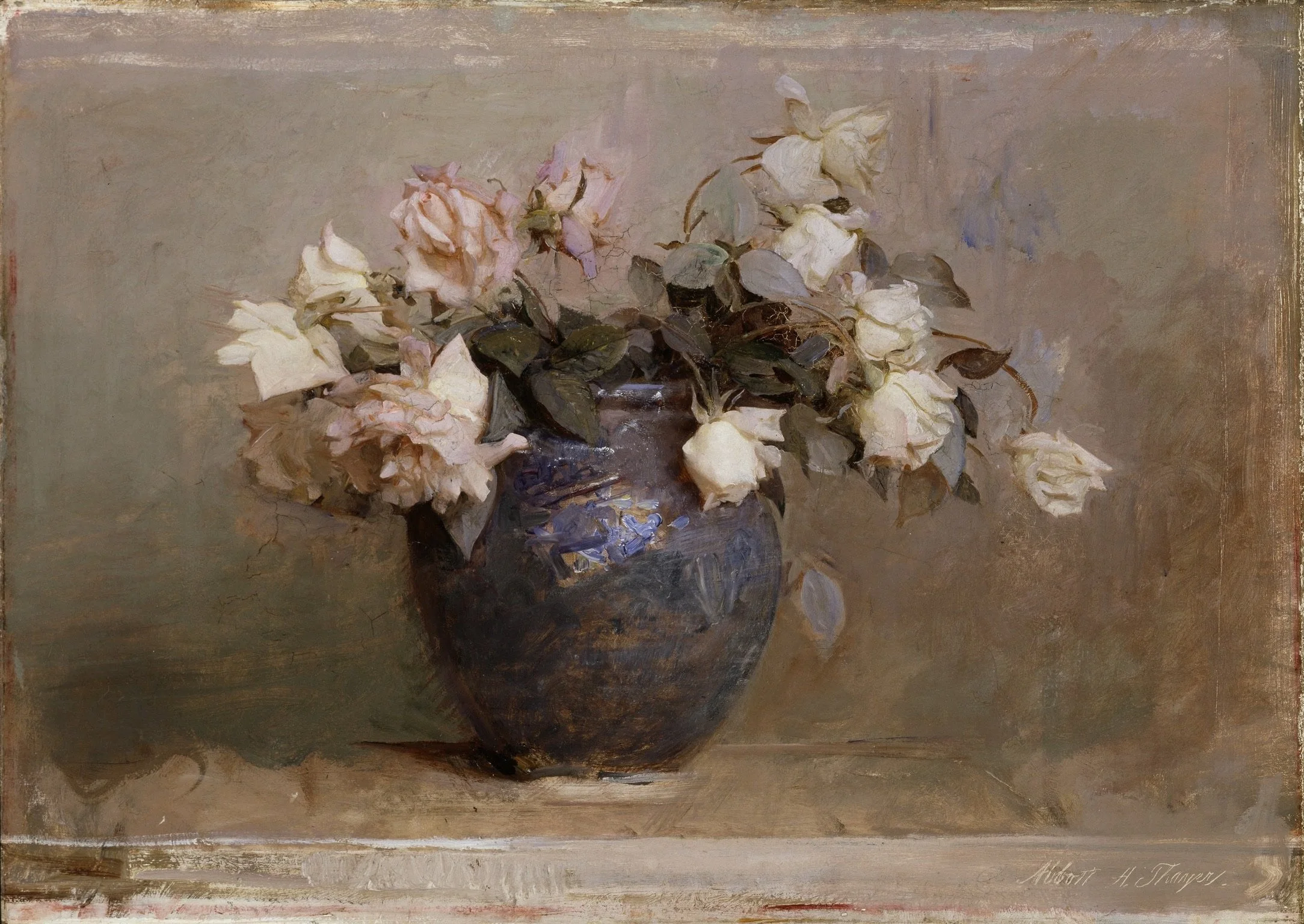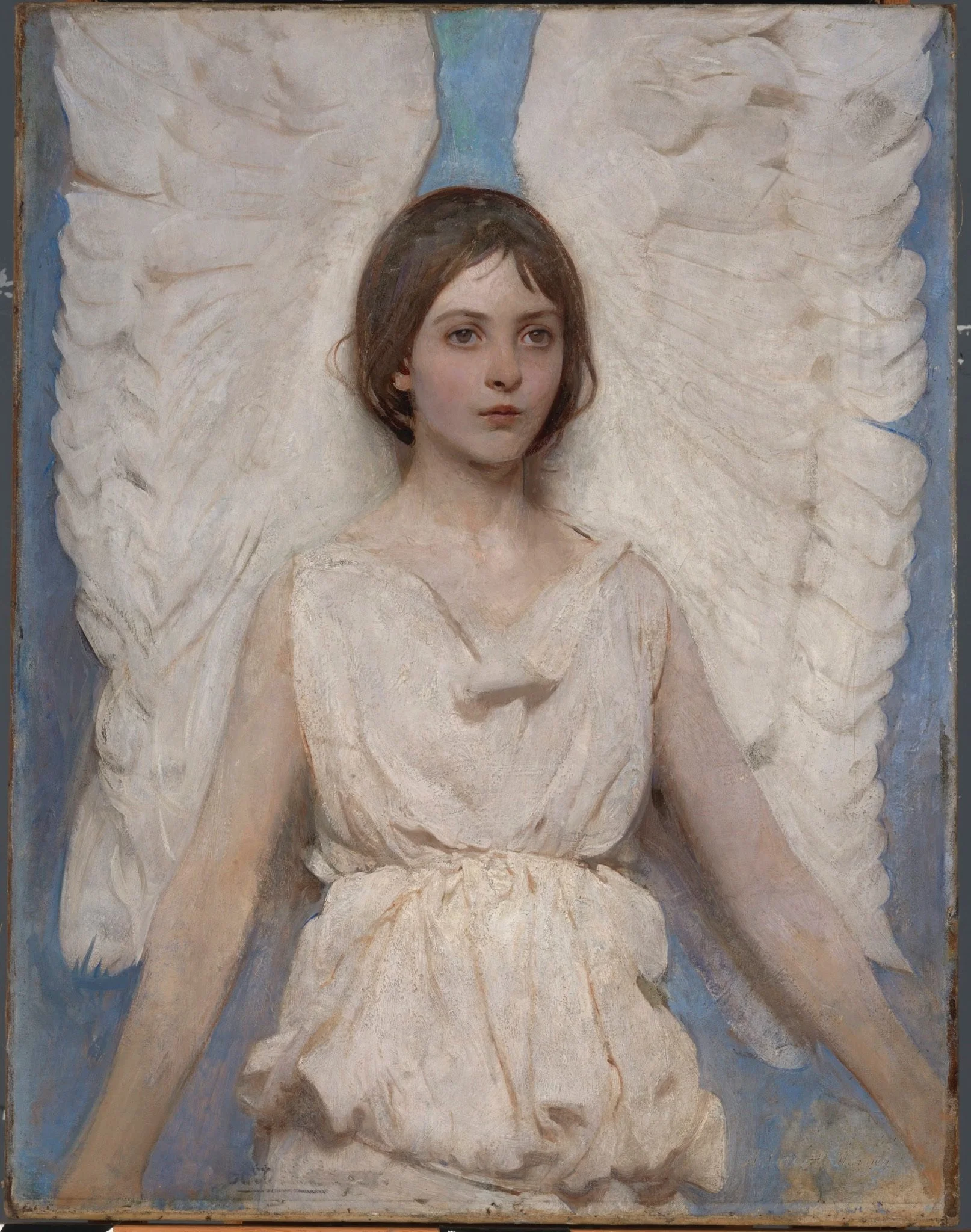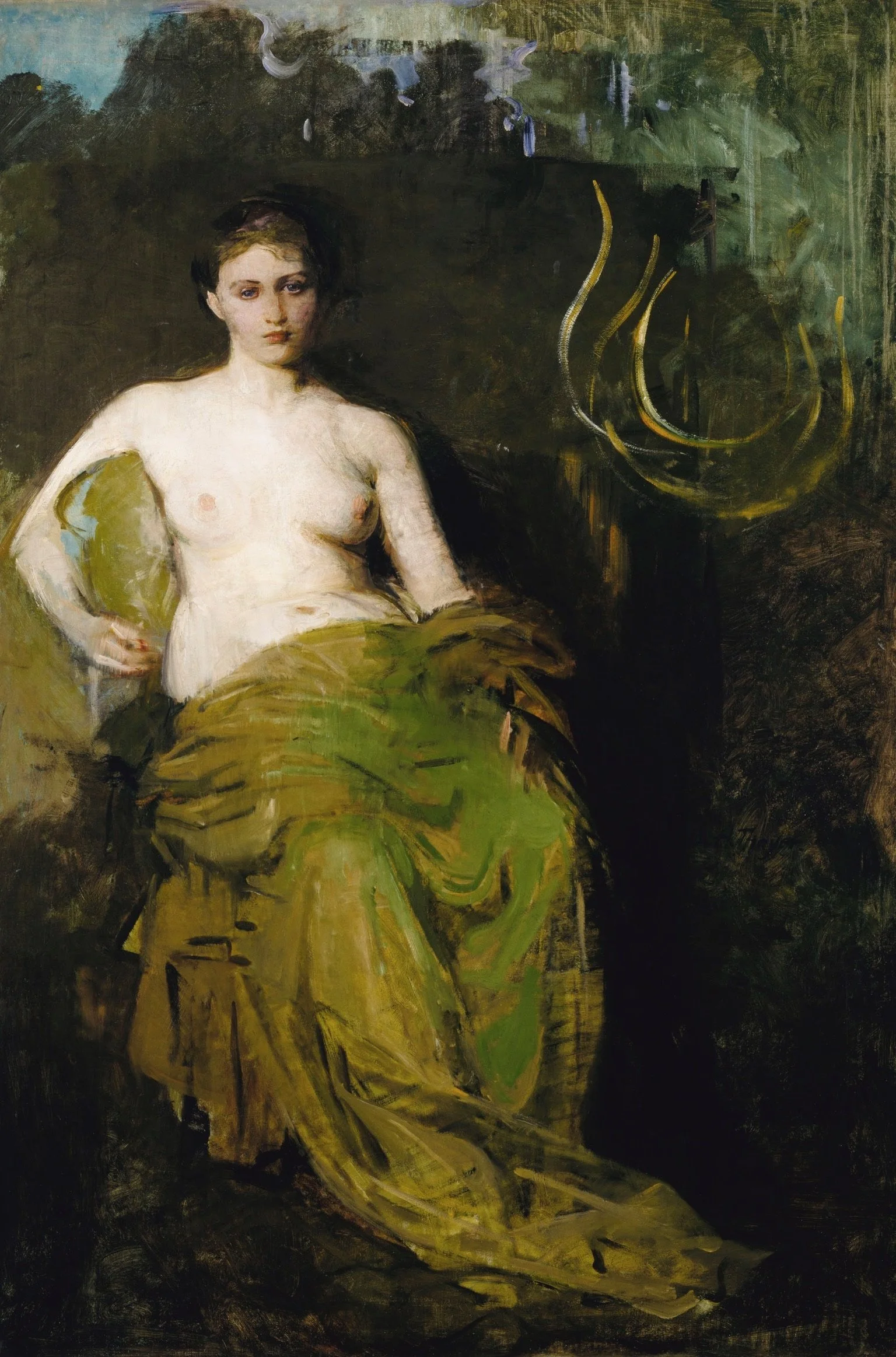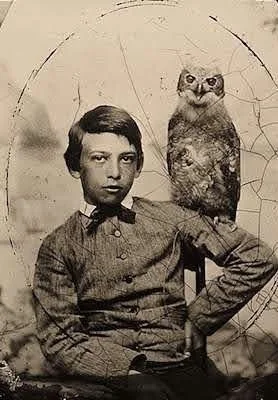In the Presence of the Sublime: Thayer’s Virgin Enthroned and My Awakening
Sixteen years ago this painting by Abbott Thayer sparked off my midlife crises. After spending an uncomfortable amount of time alone with this masterpiece, I decided that I want to create Art that will move people the way this painting moved me. What I did not realize at the time was that the ripple effect from this realization would spill over into all aspects of my life.
Abbott Handerson Thayer, Virgin Enthroned, 1891, oil on canvas, Smithsonian American Art Museum
The Virgin Enthroned (1891) stands as one of Abbott Thayer’s most profound and ambitious achievements. The painting presents a monumental Madonna seated against a backdrop of clouds and light, her form emerging softly from the atmosphere. Unlike the rigid, hierarchical Madonnas of Renaissance tradition, Thayer’s Virgin is less a religious icon and more a universal embodiment of sanctity and motherhood. Her facial expression gives her an ethereal presence, as though she is both of the earth and beyond it.
Abbott Handerson Thayer, Brother and Sister (Mary and Gerald Thayer), 1889, oil on canvas, Smithsonian American Art Museum
In my world when I left the Museum of American Art I knew that I would have to make big changes in the way I create Art in order to have the impact and emotional purity that Abbott Thayer has in abundance. Gone were the days of trying to figure out what my clients wanted me to paint, and in was the realization that I have one voice, and all my work from this point forward aimed to strengthen that voice and seek the sublime in simplicity and the divine in natural light.
Abbott Handerson Thayer, Roses, 1890, oil on canvas, Smithsonian American Art Museum. Notice how his roses convey the same voice as his figurative paintings.
Thayer’s use of light in this massive painting is especially striking. The composition is built on subtle gradations of tone, where the boundaries between figure and background blur into one another. This interplay of light and shadow, conveys an almost mystical ambiguity. The Virgin appears simultaneously radiant and hidden, as if she is emerging from the natural world itself. To Thayer, light was not merely illumination but a metaphor for divinity, the invisible made visible through form.
Abbott Handerson Thayer, Angel, 1887, oil on canvas, Smithsonian American Art Museum
In this sense, The Virgin Enthroned is not a religious image, it is Thayer’s statement of belief. To him, divinity resided everywhere: in a mountain’s curve, a bird’s wing, or the gentle fading of a figure into light. Through his art, and especially through The Virgin Enthroned, Thayer sought to show that the sacred and the natural are one and the same, eternally intertwined in the luminous fabric of existence.
Abbott Handerson Thayer, Half Draped Figure, ca. 1885, oil on canvas, Smithsonian American Art Museum
For me this painting was my first encounter with the sublime. It moves beyond prettiness or harmony; it seeks instead to awaken something primal and contemplative, where beauty meets fear and awe becomes a form of truth. The sublime moves beyond prettiness or harmony; it seeks instead to awaken something primal and contemplative, where beauty meets fear and awe becomes a form of truth.
Abbott Handerson Thayer “Mount Monadnock”, Smithsonian American Art Museum
Abbott as a boy with his owl
What do these painting invoke in you? Share your thoughts in the comments.
— Don

